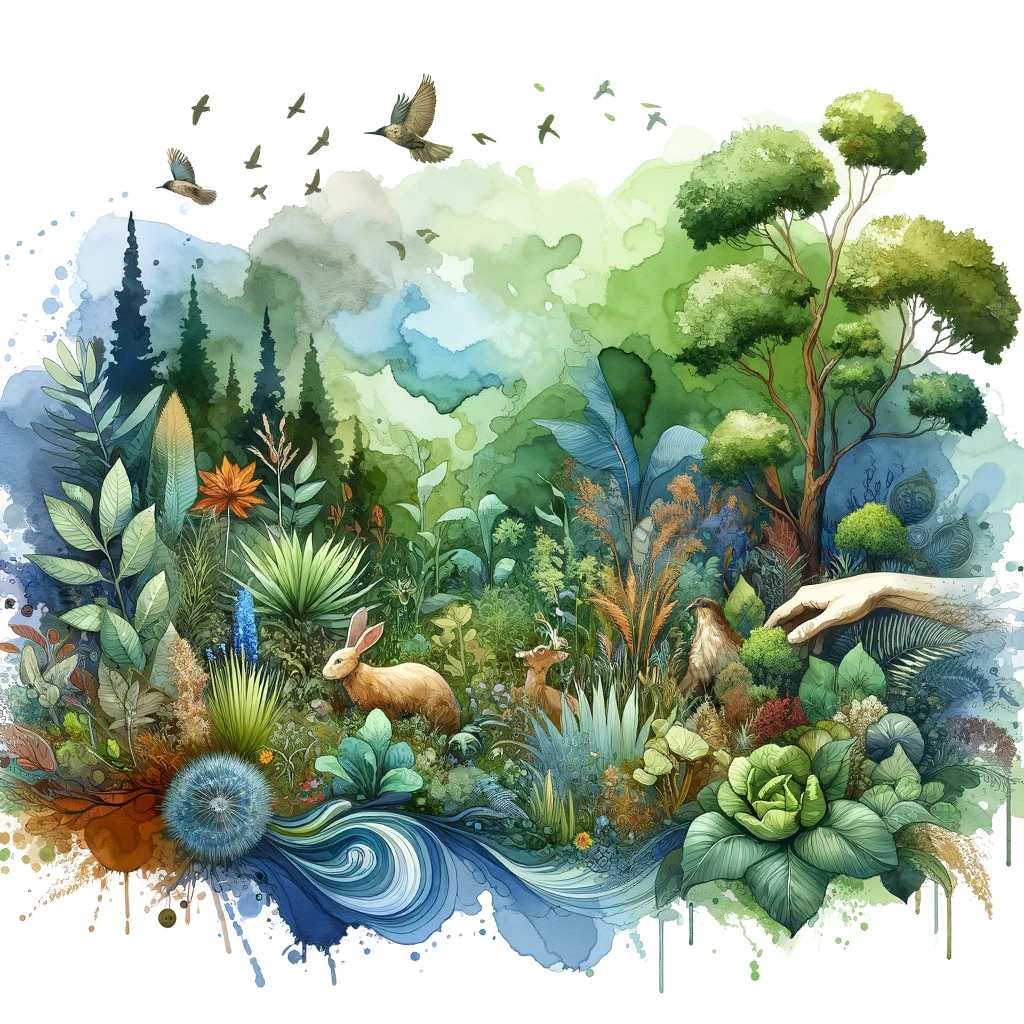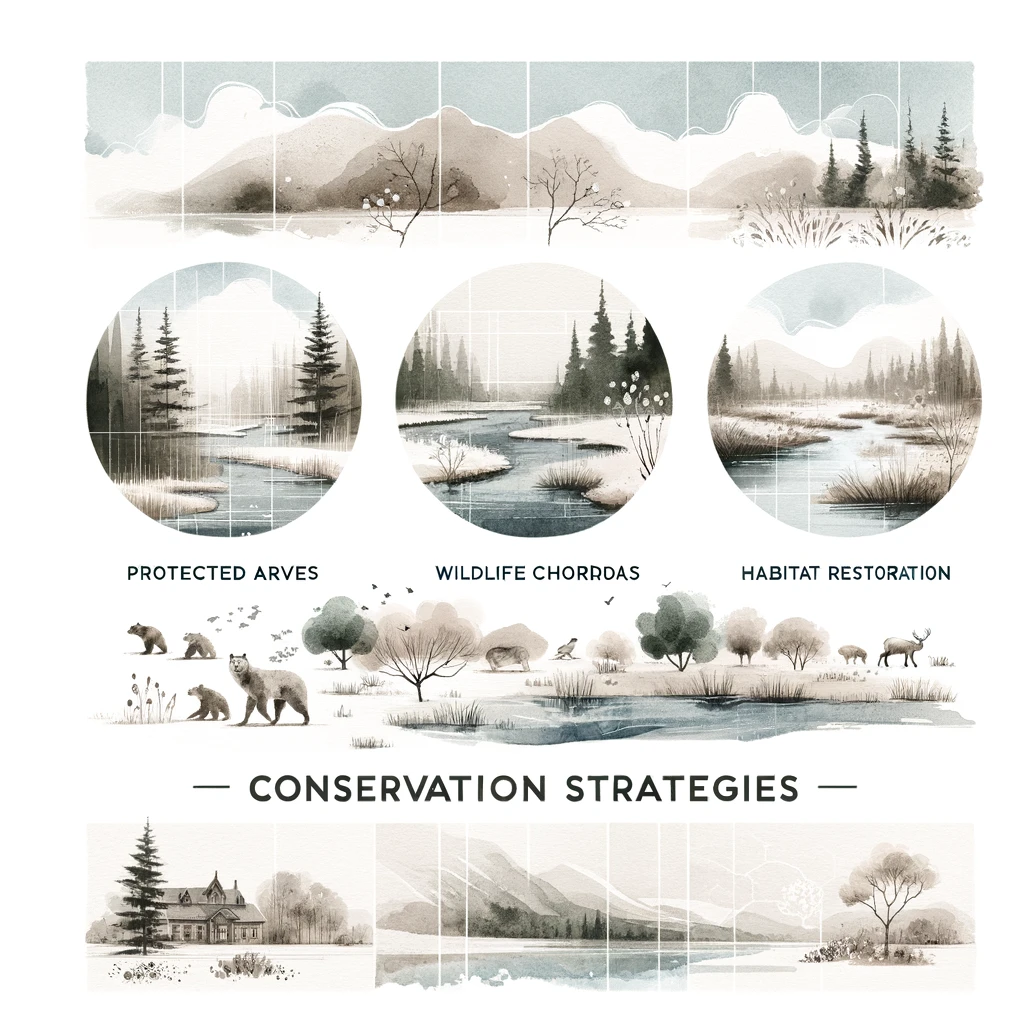Importance of Conservation
Conservation is vital for maintaining ecological balance, which ensures the sustainability of ecosystems. Ecosystems provide essential services such as clean air, water, and fertile soil, which are crucial for human well-being and biodiversity. Conserving ecosystems helps to protect species from extinction, preserve genetic diversity, and maintain the health of the biosphere. Healthy ecosystems also contribute to climate regulation, disease control, and provide resources for food, medicine, and raw materials. Thus, conservation efforts are essential for the continued survival and prosperity of both natural environments and human societies.

Conservation Strategies
- Protected Areas: Establishing protected areas like national parks, wildlife sanctuaries, and biosphere reserves is a key strategy in conservation. These areas safeguard habitats from human interference, allowing ecosystems to function naturally and species to thrive. Protected areas also serve as benchmarks for scientific research and biodiversity monitoring.
- Wildlife Corridors: These are strips of natural habitat that connect isolated populations of wildlife. Corridors enable gene flow between populations, reduce the risk of inbreeding, and allow species to migrate in response to environmental changes. They are crucial in fragmented landscapes where human activities have disrupted natural habitats.
- Habitat Restoration: This involves rehabilitating degraded ecosystems to their natural state. Restoration activities may include reforestation, wetland restoration, removal of invasive species, and soil rehabilitation. Habitat restoration not only improves biodiversity but also enhances ecosystem services like water purification and carbon sequestration.
Role of International Agreements
International agreements play a significant role in promoting global conservation efforts. Key agreements include:
- Convention on Biological Diversity (CBD): The CBD aims to conserve biological diversity, sustainably use its components, and share the benefits arising from genetic resources. It provides a framework for countries to develop strategies for conservation and sustainable use of biodiversity.
- Convention on International Trade in Endangered Species of Wild Fauna and Flora (CITES): CITES regulates international trade in endangered species to ensure it does not threaten their survival. It categorizes species based on their risk of extinction and enforces strict controls on their trade.
- Ramsar Convention on Wetlands: This agreement focuses on the conservation and sustainable use of wetlands. It recognizes the ecological and socio-economic importance of wetlands and promotes their conservation through local and national actions.

Community Participation
Local communities play a crucial role in conservation efforts. Their involvement ensures that conservation strategies are culturally appropriate and economically viable. Examples of successful community-led conservation projects include:
- Joint Forest Management (JFM) in India: Under JFM, local communities collaborate with government agencies to manage forests. Communities receive a share of forest products and participate in decision-making, leading to improved forest conservation and livelihoods.
- Community Conservancies in Kenya: These conservancies are managed by local communities and aim to conserve wildlife while promoting eco-tourism. They provide economic benefits to communities through tourism revenues and create incentives for wildlife conservation.
Challenges in Conservation
- Habitat Destruction: Urbanization, agriculture, and infrastructure development lead to habitat loss and fragmentation. Conservation strategies should include land-use planning, sustainable agricultural practices, and habitat restoration to mitigate these impacts.
- Climate Change: Climate change affects species distribution, phenology, and ecosystem services. Adaptation strategies like creating climate-resilient landscapes, protecting climate refugia, and restoring ecosystems are essential to address these challenges.
- Invasive Species: Non-native species can outcompete, prey on, or bring diseases to native species. Management strategies include early detection, rapid response, biological control, and public awareness campaigns to prevent and control invasive species.
Potential Solutions
- Sustainable Practices: Promoting sustainable agricultural, forestry, and fishing practices can reduce the pressure on natural ecosystems. This includes organic farming, agroforestry, and sustainable fishing quotas.
- Environmental Education: Raising awareness about the importance of conservation through education and outreach programs can foster a culture of stewardship and encourage community participation in conservation efforts.
- Policy and Legislation: Strengthening environmental laws and policies, and ensuring their effective enforcement, can protect ecosystems and biodiversity. This includes establishing protected areas, regulating resource extraction, and promoting sustainable development.
Conservation of ecology is essential for the well-being of our planet and future generations. By employing diverse strategies, fostering international cooperation, and involving local communities, we can overcome the challenges and ensure the sustainability of our natural world.

